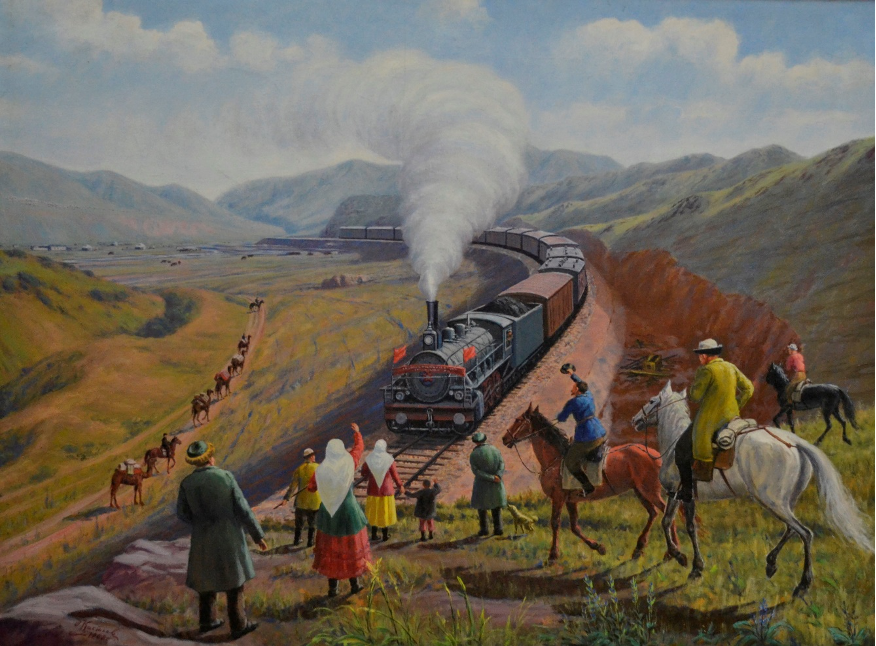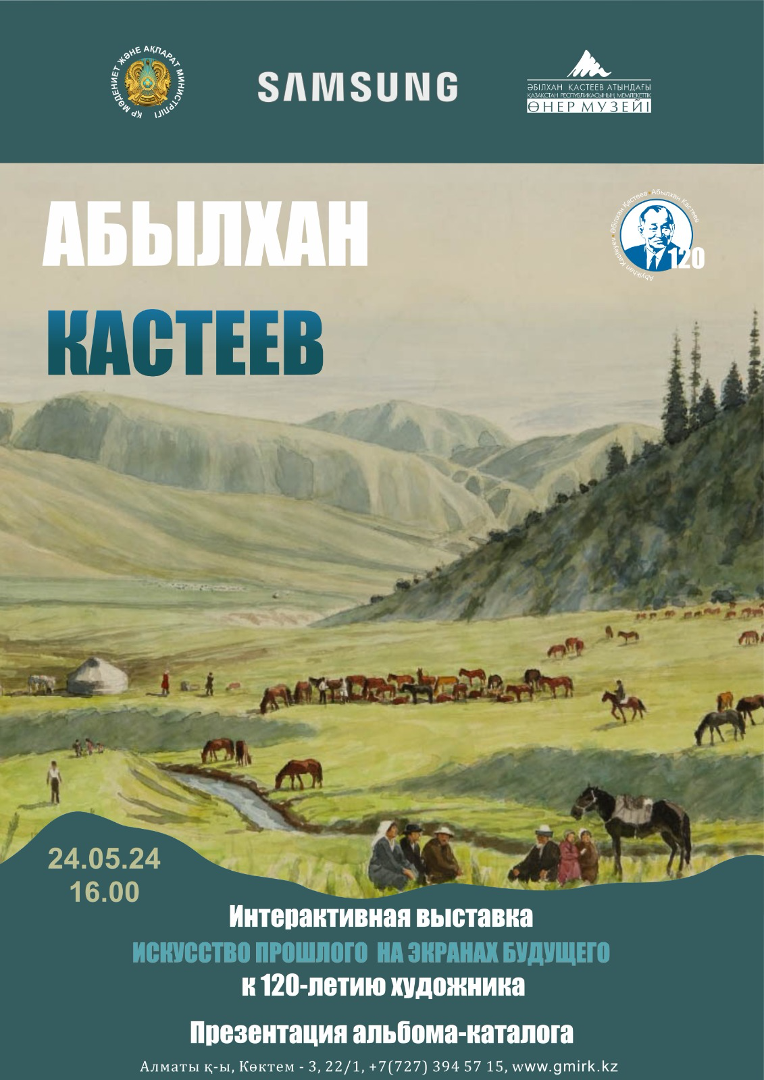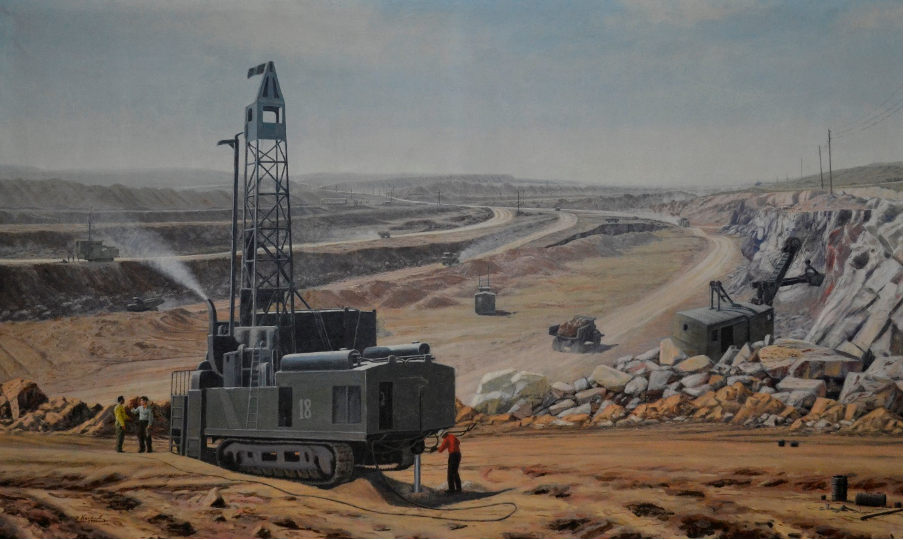
Turksib, 1969.
This interactive exhibition embodies an innovative approach to the work of the outstanding National Artist, one of the founders of the Kazakh fine arts Abylkhan Kasteyev. It also demonstrates the unique product of the company, on the screens of which famous works of the master are animated. In the Art Store application, fans of A. Kasteev's work can get acquainted with other works by the outstanding artist.

The album catalog is the result of many years of scientific work by the museum's specialists in the study of the artist's work. The catalog includes over 400 paintings and drawings, as well as ornamental sketches from the collection of the A. Kasteev State Museum of Fine Arts.
Kasteev's work is a unique asset of the national culture of Kazakhstan. His works reflect vivid and memorable images of the history and life of the Kazakh people of the last century, the spirit of the times of large-scale and global achievements has been preserved. In each work, the artist demonstrates a virtuoso mastery of artistic material, his watercolors and paintings are deeply national in their content and epic in the form of plastic expression.

"The Theft of the Bride", 1937.

Aksai Quarry, 1967.
Abylkhan Kasteev was born on January 1, 1904, in the village of Chizhin, Semirechensk region (now Dzharkent district, Almaty region), located at the foot of the Dzungarian Alatau. After his father's early death, he helped the family by working as a shepherd. Kasteev's natural talent as an artist began to manifest itself from childhood. Spending long days in the pasture alone with nature, he began to carve various figures out of limestone and sculpt clay crafts. For the first time, Abylkhan left his native village in 1926, leaving for the city of Zharkent, from where in 1928 he got to one of the main construction sites of the first five-year plan of Turksib (Turkestan-Siberian Railway), where the "proletarian forging" of Kazakh village youth was carried out. From here, 25-year-old Kasteev goes to the city of Verniy (now Almaty) to improve his abilities. In Alma-Ata, for two years he studied in the art studio of N. Khludov, mastering the basics of drawing and painting. Under the guidance of a talented teacher, such as N. Khludov, Abylkhan received the initial skills of artistic craft, forever retaining some naivety, spontaneity and poetic perception of the world around him. Such works as "Kolkhoz Toy" (1937), "Milking mares" (1936), which reflect the changes in the life of the Kazakh village in the early years of Soviet power, belong to this time. During these years, A. Kasteev began work on a series of graphic and pictorial compositions, united by the title "Old and New way of life". In 1940, A. Kasteev participated in the First Congress of the Kazakh SSR. During the Great Patriotic War, A. Kasteev works in KazTAG, creating posters and compositions on the themes of war and the labor of collective farmers in the rear. In 1942, the first personal exhibition of A. Kasteev took place in Alma-Ata, where 143 works of the artist were exhibited. In 1944, for recreating the image of Amangelda Imanov, for the first time in the republic, Abylkhan Kasteev was awarded the title of People's Artist of the Kazakh SSR. The portrait genre occupies a significant place in Kasteev's creative legacy. Portraits painted by A. Kasteev of Ch. Valikhanov, D. Dzhabaeva, A. Imanova, G. Muratbaeva are distinguished by their expressiveness and their desire to identify the characteristics of a person's character and appearance, to present a personality in its correlation with historical events and the spirit of their time. In the 1950s and 60s, A. Kasteev created several watercolor cycles, such as "New Kazakhstan", "On the land of Kazakhstan", "Wealth of Kazakhstan", "Land and people of Kazakhstan", in which he captured the large-scale economic transformations in his native republic. Abylkhan Kasteev passed away in 1973, leaving behind a great creative legacy, much of which is in the collection of the State Museum of Arts of the Republic of Kazakhstan, which was named after him in 1984. A. Kasteev's works are also in many museums and private collections in Kazakhstan and abroad. Each of A. Kasteev's works is an inspired narrative about his native land and its people, an expression of his hope for a better and happier life for his people, to whom he devoted all his work.
The exhibition opens on May 24, 2024 at 16:00.









